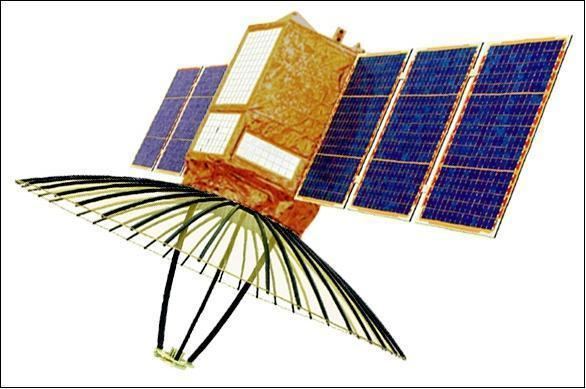Mission type Radar imaging COSPAR ID 2009-019A Manufacturer ISROIAI Inclination 41.21° Period 1.6 hours | Operator Indian Air ForceISRO SATCAT no. 34807 Launch date 20 April 2009 Inclination 41.21° Launch mass 300 kg | |
 | ||
Website www.isro.gov.in/Spacecraft/risat-2 Similar | ||
RISAT-2, or Radar Imaging Satellite 2 is an Indian radar reconnaissance satellite that is part of India's RISAT programme. It was built by Israel Aerospace Industries and successfully launched aboard a PSLV-CA rocket at 01:15 GMT on April 20, 2009 from the Second Launch Pad at the Satish Dhawan Space Centre.
Contents

RISAT-2's main sensor is an X-band synthetic aperture radar from Israel Aerospace Industries (IAI). It is designed to monitor India's borders and as part of anti-infiltration and anti-terrorist operations. The satellite has a mass of 300 kilograms (660 lb).

Technical capabilities

RISAT-2 is India's first heavy satellite with a synthetic aperture radar. It possess day-night as well as all-weather monitoring capability. Potential applications include tracking hostile ships at sea that are deemed a military threat to India.

Though ISRO sought to underplay the satellite's defence applications in its announcements, a substantial number of articles concerning RISAT-2 in the Indian media continue to refer to it as a "spy satellite". However, the Government of India and the Indian Space Research Organization's (ISRO) official website have repeatedly emphasized that RISAT-2 will enhance that organization's capability for earth observation, especially during floods, cyclones, landslides and aid Indian authorities in conducting disaster management in more effective ways. Doordarshan, India's extensive state-run television network, did not provide a live telecast of the launch.
History
RISAT-2 was built at an accelerated pace following the 2008 Mumbai attacks, due to Indian army but however due to delay with the indigenously developed C band for RISAT-1. It is India's first dedicated reconnaissance satellite.
The X-band SAR used by RISAT-2 was obtained from Israel in return for launch services for the Israeli TecSAR satellite. The SAR sensor enables RISAT-2 to return images at any time of day and in all weather conditions.
ISRO scientists spent tense hours on April 19, 2009 prior to launch as one of the umbilical cords holding the PSLV-CA rocket to the launch pad fell off, damaging nearly six connectors. The ANUSAT student microsatellite was launched aboard the same rocket as a secondary payload.
RISAT-2 was used to search for and eventually locate wreckage of the helicopter crash that claimed the life of Y. S. Rajasekhara Reddy, Chief Minister of the State of Andhra Pradesh, as well as the lives of his fellow passengers, while traveling over dense jungles in southern India on Sep 2, 2009.
